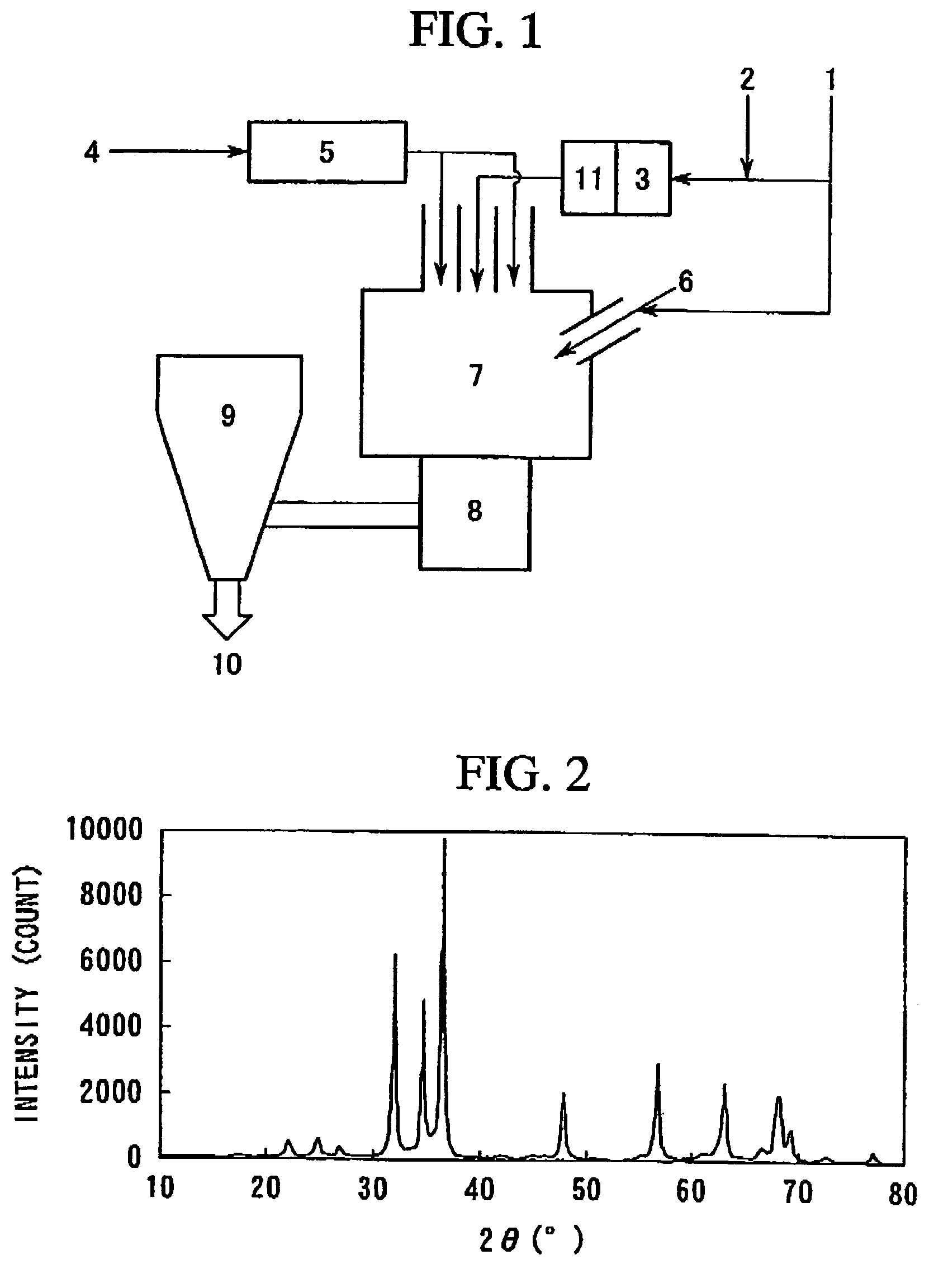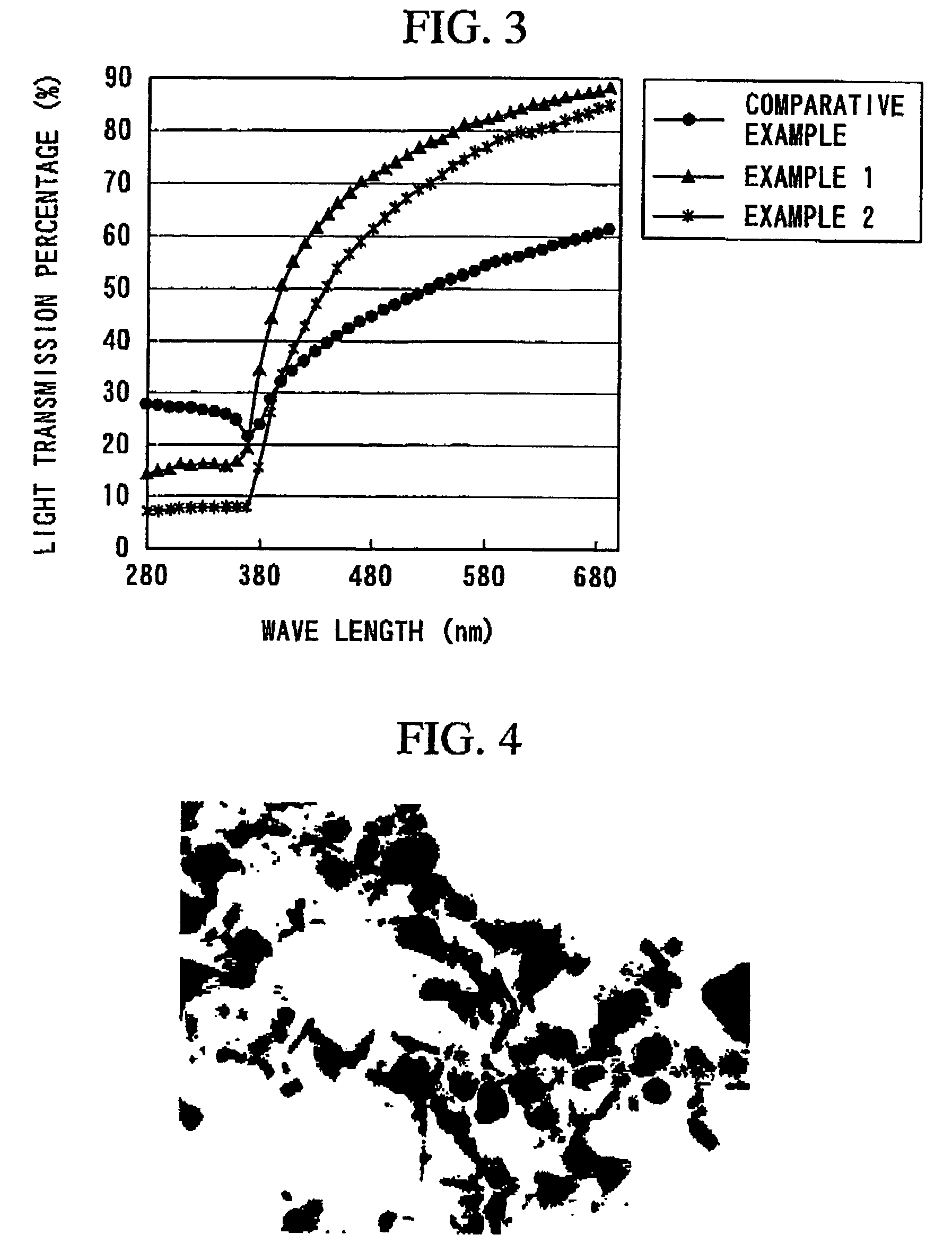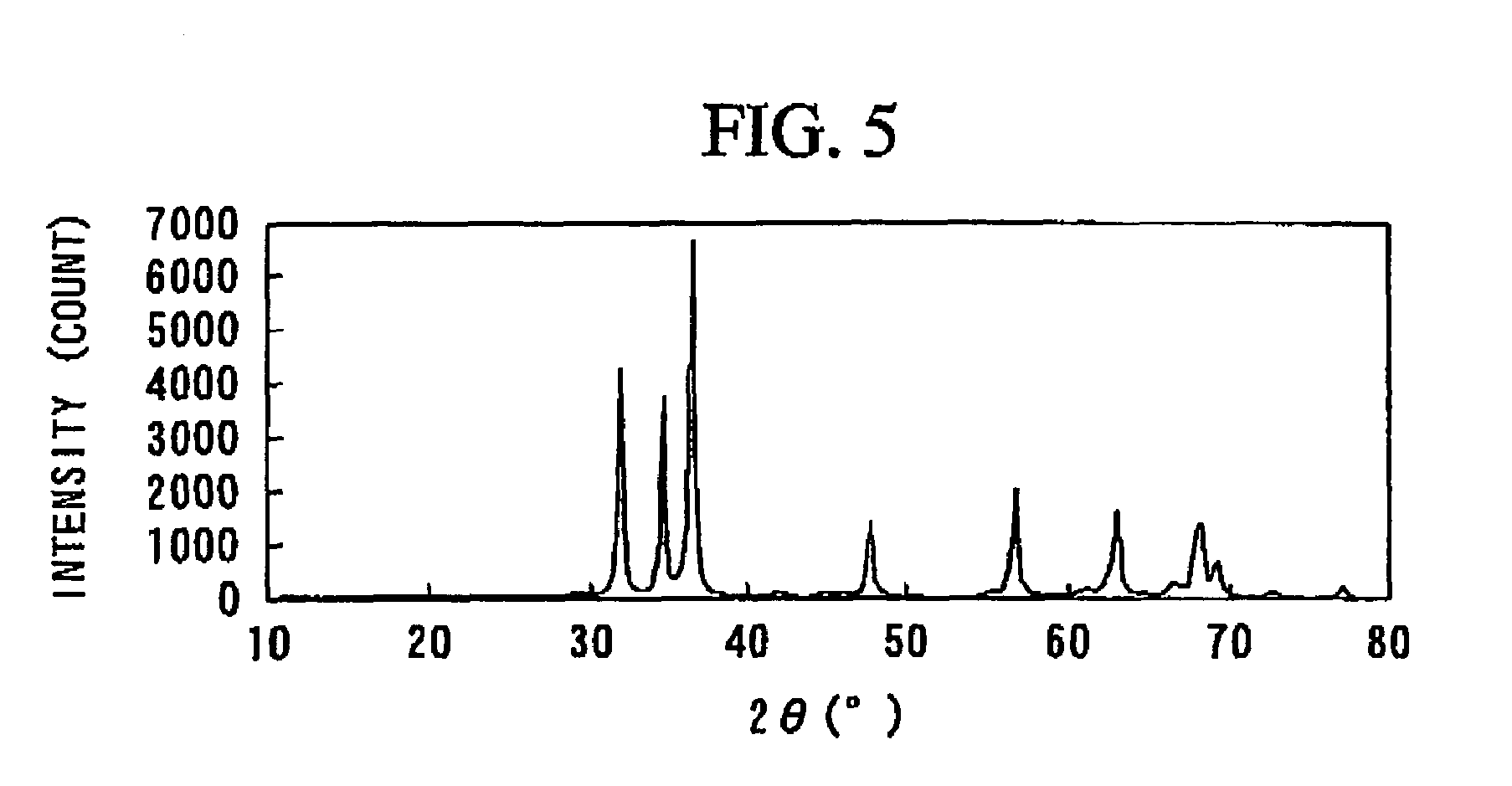Complex oxide, and production process therefor and applications thereof
- Summary
- Abstract
- Description
- Claims
- Application Information
AI Technical Summary
Benefits of technology
Problems solved by technology
Method used
Image
Examples
example 1
[0125]Metallic zinc (3.8 kg / hour) and nitrogen gas heated to 900° C. (25 Nm3 / hour) (the symbol “N” denoted “under normal conditions”; the same shall apply hereinafter) were fed to a zinc gasification apparatus, to thereby obtain a Zn raw material gas. The resultant Zn raw material gas was heated to 1,000° C. in a Zn raw material gas heating apparatus.
[0126]Separately, an oxidative gas containing steam (3 vol %) and oxygen (97 vol %) (25 Nm3 / hour) was heated in an oxidative gas heating apparatus. The temperature of the heated gas was 1,030° C. at an inlet of a reactor.
[0127]Tetraethoxysilane (700 g / hour) was heated to 300° C. together with nitrogen.
[0128]These were fed into a reactor using a nozzle consisting of tubes which are coaxially aligned each other and each of which are exclusively for the Zn raw material gas, oxidative gas, and nitrogen gas containing tetraethoxysilane respectively in this order from inner side to outer side.
[0129]The Zn raw material gas was fed at a flow ra...
example 2
[0139]Metallic zinc (6 kg / hour) and nitrogen gas heated to 900° C. (25 Nm3 / hour) were fed to a zinc gasification apparatus, to thereby obtain a Zn raw material gas. The resultant Zn raw material gas was heated to 1,000° C. in a Zn raw material gas heating apparatus.
[0140]Separately, an oxidative gas containing steam (3 vol %) and oxygen (97 vol %) (25 Nm3 / hour) was heated in an oxidative gas heating apparatus. The temperature of the heated gas was 1.030° C. at an inlet of a reactor.
[0141]Tetraethoxysilane (10 kg / hour) was heated to 300° C. together with nitrogen.
[0142]These were fed into a reactor using a nozzle consisting of tubes which are coaxially aligned each other and each of which are exclusively for the Zn raw material gas, oxidative gas, and nitrogen gas containing tetraethoxysilane respectively in this order from inner side to outer side.
[0143]The Zn raw material gas was fed at a flow rate of 100 m / second; the oxidative gas was fed at a flow rate of 90 m / second; and the ni...
example 3
[0146]Pure water was added to the complex oxide powder obtained in Example 1 such that the concentration of the powder became 0.5%, to thereby prepare a slurry. Subsequently, a water-dispersion-type urethane resin (VONDICl040NS, product of Dainippon Ink and Chemicals, Inc.) was added to the resultant slurry such that the amount of the resin became 70% on the basis of the entirety of the powder, to thereby prepare a coating agent containing the complex oxide and the urethane resin.
[0147]Subsequently, a polyester nonwoven fabric (6 deniers, product of Takayasu Co., Ltd.) was impregnated with the above-prepared coating agent, and the resultant fabric was squeezed by use of a roller, followed by drying at 80° C. for two hours, to thereby obtain a polyester nonwoven fabric on which the complex oxide of the present invention was supported.
[0148]The above-obtained polyester nonwoven fabric was irradiated with light of 50 mW / cm2 by use of a light fastness tester (SUNSET CPS+, product of ATL...
PUM
| Property | Measurement | Unit |
|---|---|---|
| Temperature | aaaaa | aaaaa |
| Temperature | aaaaa | aaaaa |
| Temperature | aaaaa | aaaaa |
Abstract
Description
Claims
Application Information
 Login to View More
Login to View More - Generate Ideas
- Intellectual Property
- Life Sciences
- Materials
- Tech Scout
- Unparalleled Data Quality
- Higher Quality Content
- 60% Fewer Hallucinations
Browse by: Latest US Patents, China's latest patents, Technical Efficacy Thesaurus, Application Domain, Technology Topic, Popular Technical Reports.
© 2025 PatSnap. All rights reserved.Legal|Privacy policy|Modern Slavery Act Transparency Statement|Sitemap|About US| Contact US: help@patsnap.com



